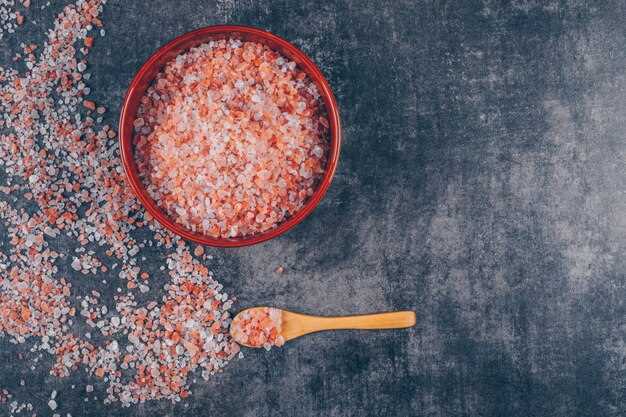
Looking for a natural way to support your heart health? Look no further than the powerful combination of lisinopril and red yeast rice.
Lisinopril is a medication commonly prescribed to treat high blood pressure. It works by relaxing blood vessels, making it easier for the heart to pump blood.
Red yeast rice has been used for centuries in traditional Chinese medicine to promote cardiovascular health. It contains naturally occurring substances that help lower cholesterol levels and support overall heart function.
When used together, lisinopril and red yeast rice can provide a comprehensive approach to maintaining heart health. Whether you’re already taking lisinopril or looking for a natural alternative, this powerful combination could be exactly what you need.
Benefits
Lisinopril is a popular medication used to treat high blood pressure and heart failure. When taken in conjunction with red yeast rice, it offers numerous benefits for heart health.
One of the main benefits of lisinopril and red yeast rice is improved heart health. It works by relaxing the blood vessels, allowing blood to flow more freely and reducing the workload on the heart. This can help to lower blood pressure and prevent complications such as heart attacks and strokes.
Another benefit is the reduction in cholesterol levels. Red yeast rice contains natural compounds that can inhibit the production of cholesterol in the liver. When combined with the blood pressure-lowering effects of lisinopril, this can lead to a significant decrease in bad cholesterol levels.
Additionally, lisinopril and red yeast rice have been shown to have antioxidant properties. Antioxidants help to protect the body against damage from harmful free radicals, which can contribute to the development of heart disease and other chronic conditions.
Overall, the combination of lisinopril and red yeast rice offers a natural and effective way to improve heart health and reduce the risk of cardiovascular disease. Consult with your doctor to see if this medication is right for you.
Improved heart health
One of the key benefits of taking lisinopril and red yeast rice is the improvement in heart health. Both of these ingredients have been shown to have positive effects on cardiovascular health.
Lisinopril is an ACE inhibitor that helps relax blood vessels, which reduces the workload on the heart and improves blood flow. This can help lower blood pressure and reduce the risk of heart attack and stroke.
Red yeast rice, on the other hand, contains naturally occurring statins that help lower cholesterol levels. High cholesterol is a major risk factor for heart disease, so by reducing cholesterol levels, red yeast rice can help improve heart health.
By combining the benefits of lisinopril and red yeast rice, individuals can experience an even greater improvement in heart health. Together, these ingredients can help lower blood pressure, reduce cholesterol levels, and decrease the risk of cardiovascular events.
It’s important to note that while lisinopril and red yeast rice can be effective in improving heart health, they should always be taken under the supervision of a healthcare professional. They may not be suitable for everyone and can cause side effects in some individuals.
If you’re interested in improving your heart health, it’s worth discussing the potential benefits and risks of taking lisinopril and red yeast rice with your doctor. They can provide personalized advice and help determine if these ingredients are suitable for you.
Reduced cholesterol levels
One of the key benefits of taking Lisinopril and red yeast rice is that it can help reduce cholesterol levels in the body. High cholesterol can lead to various heart problems, including heart disease and stroke. By lowering cholesterol, these medications can help improve heart health and reduce the risk of cardiovascular issues.
Both Lisinopril and red yeast rice work together to lower cholesterol levels. Lisinopril is an ACE inhibitor that helps relax blood vessels and lower blood pressure, while red yeast rice contains naturally occurring substances that can help decrease cholesterol production in the liver.
When taken as directed, these medications can be effective in reducing LDL cholesterol, which is often referred to as “bad” cholesterol. They can also help increase HDL cholesterol, which is often referred to as “good” cholesterol. Maintaining a healthy balance of these cholesterol levels is important for overall heart health.
It is important to note that while Lisinopril and red yeast rice can help reduce cholesterol levels, they should not be used as a substitute for a healthy diet and lifestyle. It is still important to eat a balanced diet, exercise regularly, and manage other risk factors for heart disease.
In addition to reducing cholesterol levels, taking Lisinopril and red yeast rice may also have other benefits for heart health, such as improving blood pressure and reducing the risk of blood clots. However, it is important to talk to a healthcare provider before starting any new medication or supplement to determine if it is appropriate for your individual health needs.
| Benefits | Usage | Side Effects |
|---|---|---|
| Improved heart health | Take as directed by a healthcare provider | Possible risks |
| Reduced cholesterol levels | Can help lower LDL cholesterol and increase HDL cholesterol | Common side effects |
Usage
It is important to take Lisinopril and red yeast rice exactly as prescribed by your doctor or healthcare professional. Follow all instructions on the prescription label and do not take this medication in larger or smaller amounts or for longer than recommended.
Lisinopril and red yeast rice should be taken orally, with or without food, usually once a day.
Be sure to swallow the tablet whole, do not crush, chew, or break it. Breaking the pill may cause too much of the drug to be released at one time, which could result in adverse effects.
If you miss a dose, take it as soon as you remember. However, if it is almost time for your next dose, skip the missed dose and continue with your regular dosing schedule. Do not take a double dose to make up for a missed one.
It is important to adhere to the prescribed dosage and follow the medication schedule as directed. Do not stop taking Lisinopril and red yeast rice abruptly without consulting your doctor, as this may worsen your condition and increase the risk of experiencing side effects.
Always keep the medication in a cool and dry place, away from heat and moisture.
Side effects
While Lisinopril and red yeast rice offer numerous benefits for heart health and cholesterol reduction, it is important to be aware of the potential side effects that may occur. These side effects can vary from person to person and can range from mild to severe.
Common side effects

Some common side effects of Lisinopril and red yeast rice include dizziness, headache, nausea, diarrhea, and stomach upset. These side effects are usually mild and temporary, and most individuals are able to tolerate them without any major issues.
Possible risks

In rare cases, Lisinopril and red yeast rice may cause more serious side effects, such as allergic reactions or liver damage. It is important to seek medical attention if you experience any unusual symptoms or if the side effects become severe.
It is also worth noting that the use of Lisinopril and red yeast rice may interact with certain medications, so it is important to inform your healthcare provider about all the medications you are currently taking.
If you have any concerns about the potential side effects or risks associated with Lisinopril and red yeast rice, it is recommended to speak with your healthcare provider for further guidance and information.
Possible risks
While taking Lisinopril and red yeast rice, there are potential risks that need to be considered. Before starting this medication, it is important to consult with a healthcare professional to understand the potential risks and benefits for your individual situation.
Interactions with other medications
Lisinopril and red yeast rice may interact with other medications, including prescription drugs, over-the-counter drugs, and herbal supplements. These interactions can lead to adverse effects and should be discussed with a healthcare professional.
Allergic reactions
Some individuals may experience allergic reactions to Lisinopril and red yeast rice. These reactions can range from mild to severe and may include symptoms such as rash, itching, swelling, and difficulty breathing. In case of an allergic reaction, immediate medical attention should be sought.
Kidney problems
Lisinopril can affect kidney function and may cause or worsen kidney problems in some individuals. It is important to monitor kidney function regularly while taking this medication, especially for individuals with pre-existing kidney conditions.
Pregnancy and breastfeeding
Lisinopril and red yeast rice should not be used during pregnancy or while breastfeeding. These medications can potentially harm the developing fetus or infant. Pregnant or breastfeeding individuals should discuss safer alternatives with a healthcare professional.
It is important to note that this is not an exhaustive list of possible risks. Other potential risks may exist, and it is essential to have a thorough discussion with a healthcare professional before starting Lisinopril and red yeast rice.
| Side Effect | Frequency |
|---|---|
| Dizziness | Common |
| Cough | Common |
| Headache | Common |
| Stomach pain | Common |
Common side effects
While lisinopril and red yeast rice can provide numerous health benefits, it is important to be aware of the potential side effects. Although the majority of individuals who take lisinopril and red yeast rice do not experience any adverse reactions, some common side effects may occur. It is important to note that these side effects are typically mild and temporary.
1. Dizziness
One of the most common side effects of lisinopril and red yeast rice is dizziness. Some individuals may feel lightheaded or unsteady when standing up or changing positions.
2. Fatigue
Feeling tired or experiencing a lack of energy is another common side effect. Individuals may notice a decrease in their overall stamina or motivation.
It is essential to consult with a healthcare professional if any of these common side effects persist or worsen over time. The healthcare provider can provide guidance and recommend appropriate steps to alleviate these side effects.
Remember to always follow the recommended dosage and directions provided by your healthcare professional. If you experience any severe or unusual side effects, seek immediate medical attention.
